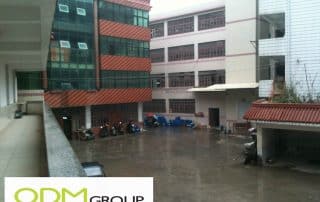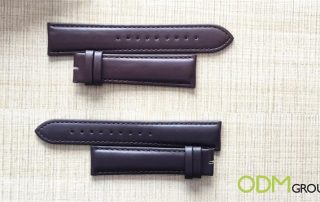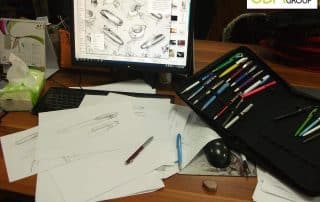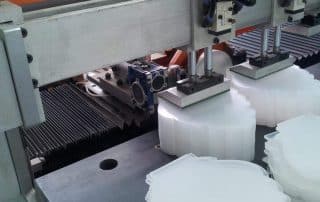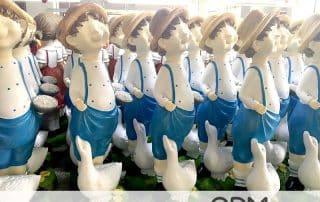The best way to ensure the reliability of a supplier and understand the manufacturing process of a product to control the progress of a project, is to go directly to the factory. This is why we, at ODM, have made it our mission to carry out this task on a regular basis. Recently, the company went on a ceramic factory visit in Shandong province, northeast China.
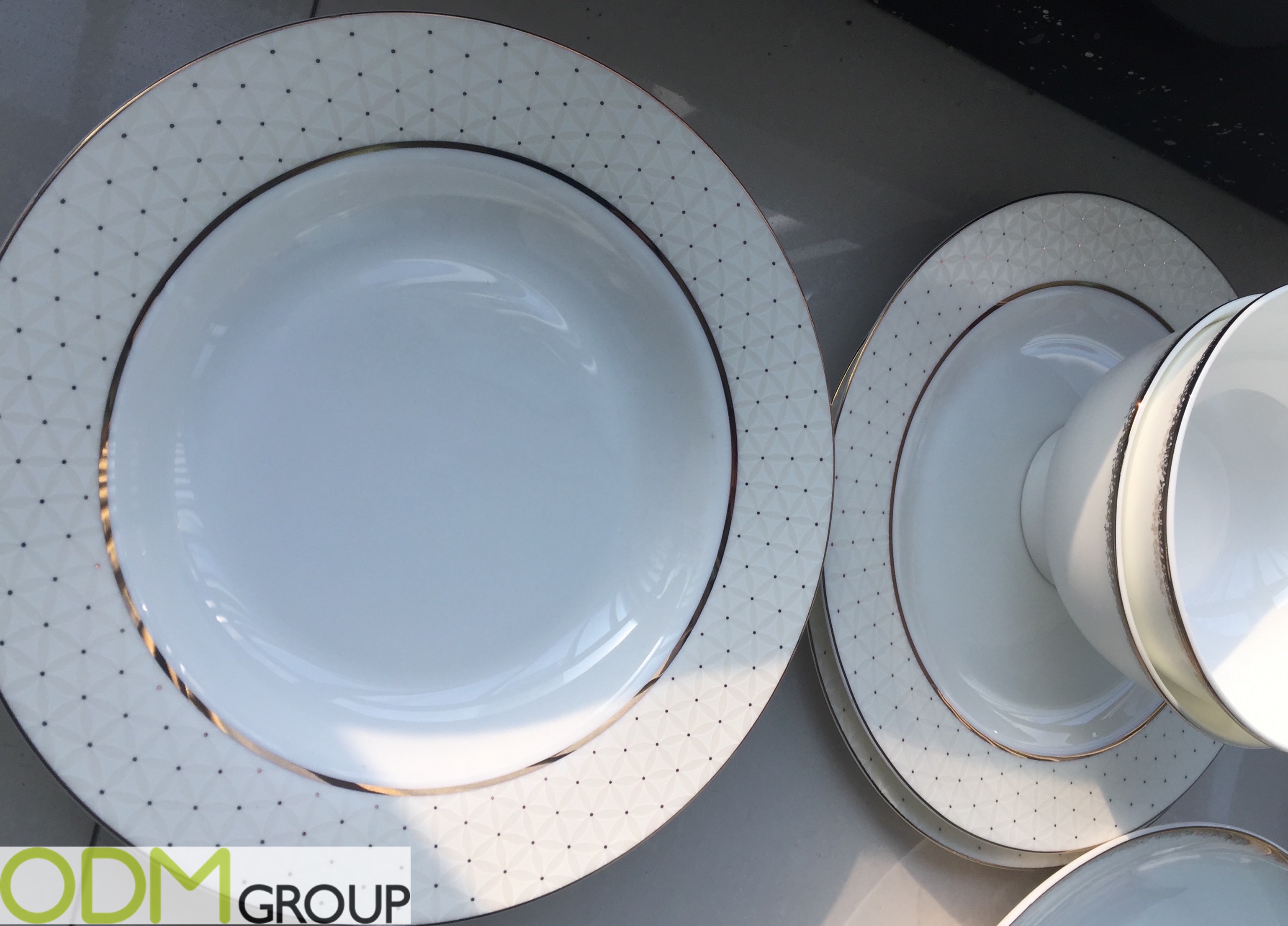
Ceramic Factory Visit – Manufacturing in China
There are several techniques for the creation of ceramic products, but in this blog, we will focus on the technique used by the factory visited. Our supplier has an excellent knowledge of ceramic manufacturing, is very well-organized and in line with standards. Unsurprisingly, they are experiencing a great success, with a lot of worldwide orders and also about to pass Walmart factory audit.
Ceramic Factory Visit – Step 1. Creation of the Mould
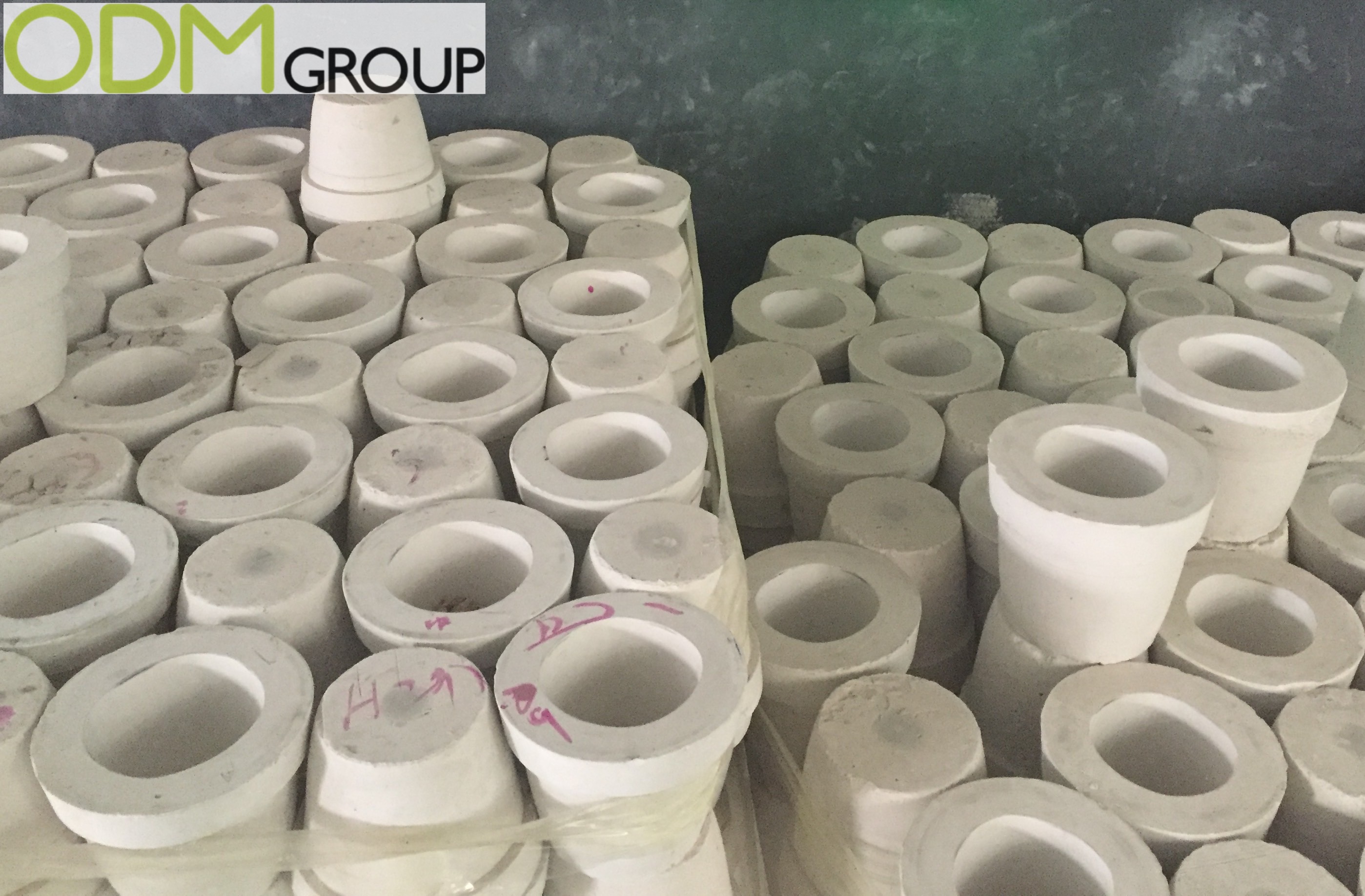
Ceramic Factory Visit – Manufacturing in China
First of all, in order to repeat the shapes identically, it is necessary to create a mould according to the client’s design. A mould is made with clay and can produce about 200 pieces. We like this material because it is very low budget and simple to implement.
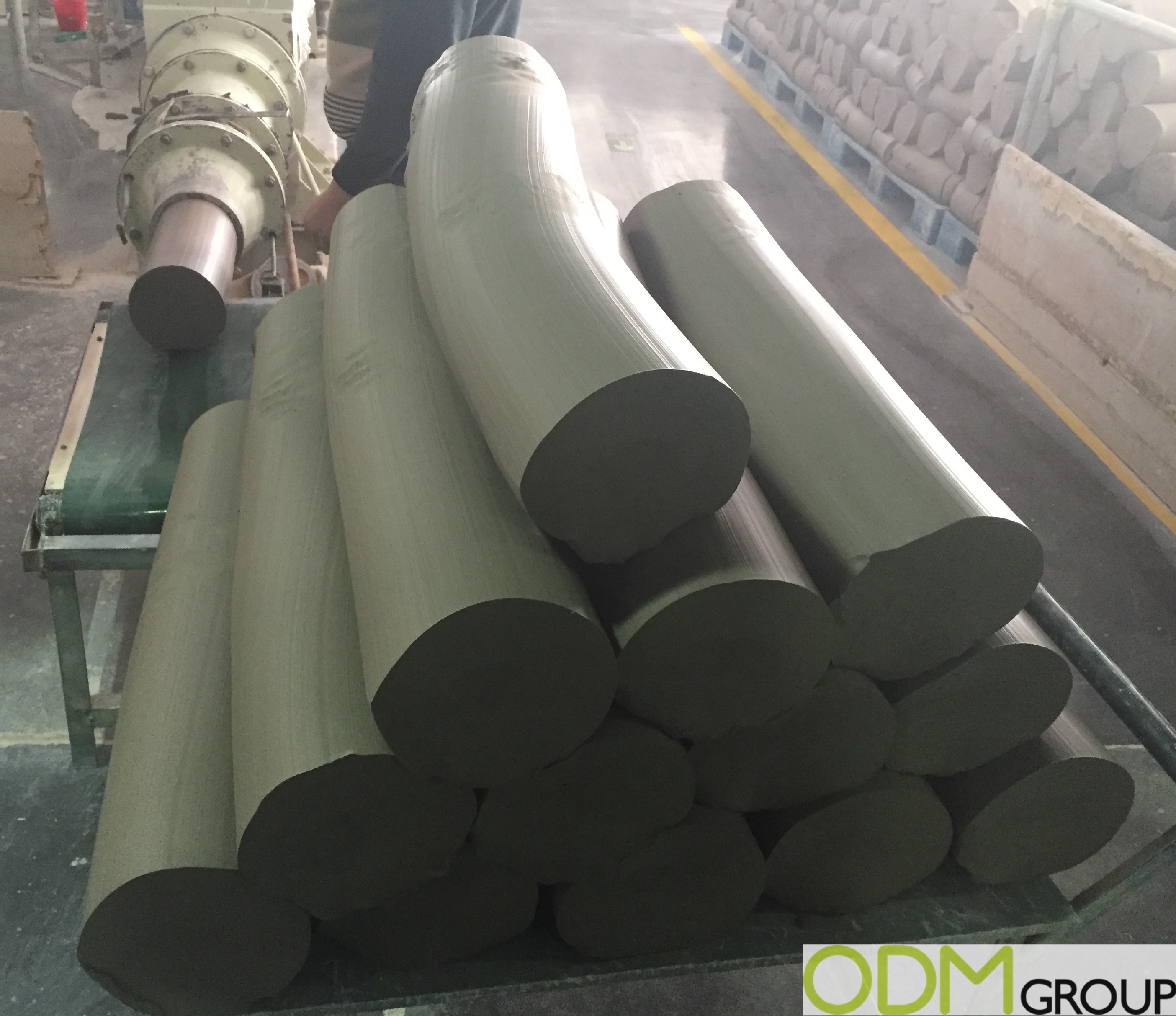
Ceramic Factory Visit – Manufacturing in China
It is important to construct a formwork slightly larger than the desired shape due to the retraction of the ground during heating. Then to fill this form with dough, take the model piece and press it firmly into the dough to the desired mold release.
Ceramic Factory Visit – Step 2. Shaping
Once the mould is ready, the second step is the shaping with machines.
- Sizing: Forming the dough on a rotating mould by the action of a gauge. The plaster absorbs the water from the slip and a solidified mass is formed progressively on the walls of the mould. It is the time that the slip is left in the mould which will give the thickness of the film of the piece. The excess slip is then evacuated and the piece unmoulded.
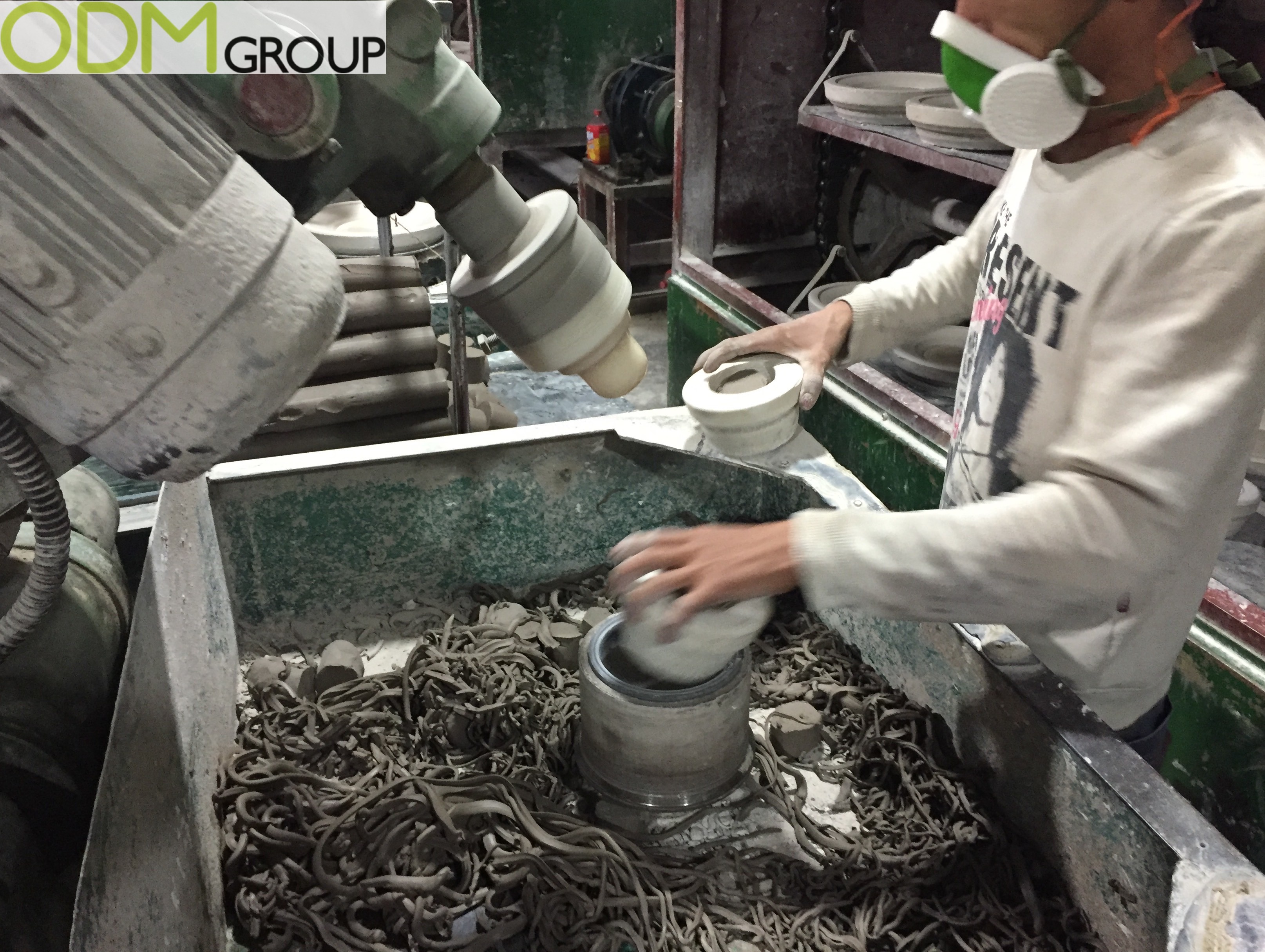
Ceramic Factory Visit – Manufacturing in China
- Slip casting : The raw material is clay dough. The advantage of this material is its plasticity. This gray dough that contains vegetable matter is dissolved with water and this is called slip casting process.
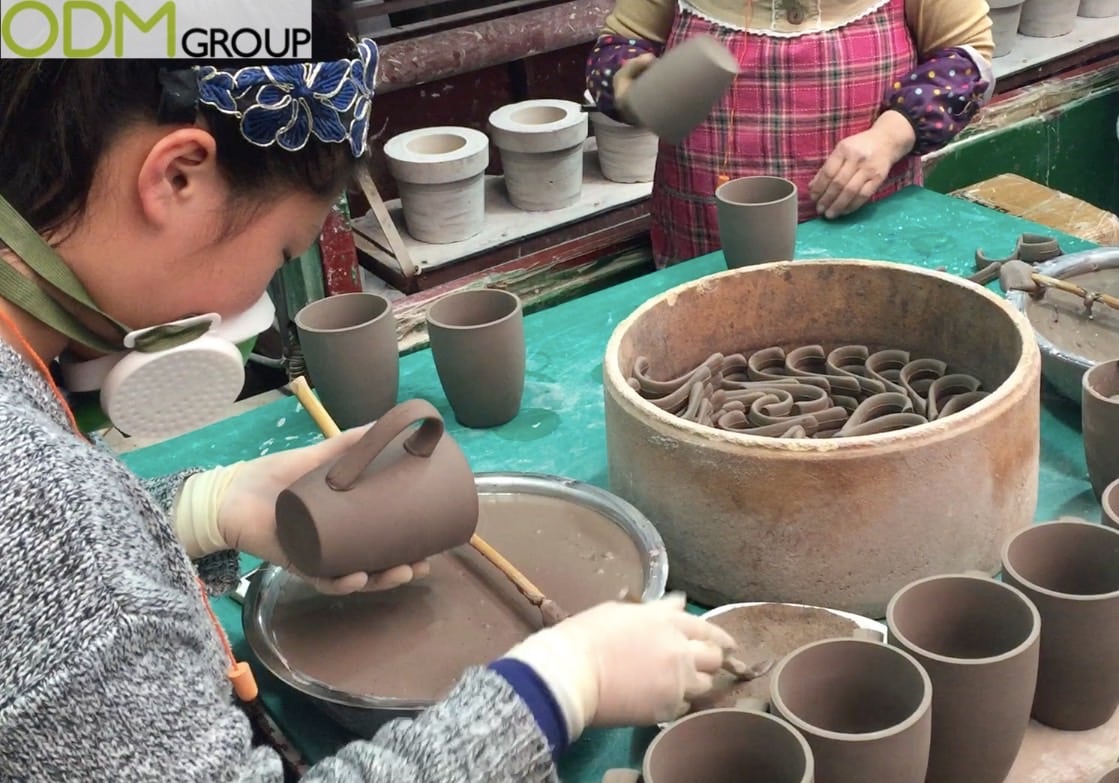
Ceramic Factory Visit – Manufacturing in China
This is used for gluing together parts of a ceramic before heating, as we can see above with the handle of the mug. Products are then brought to another production line for glazing process.
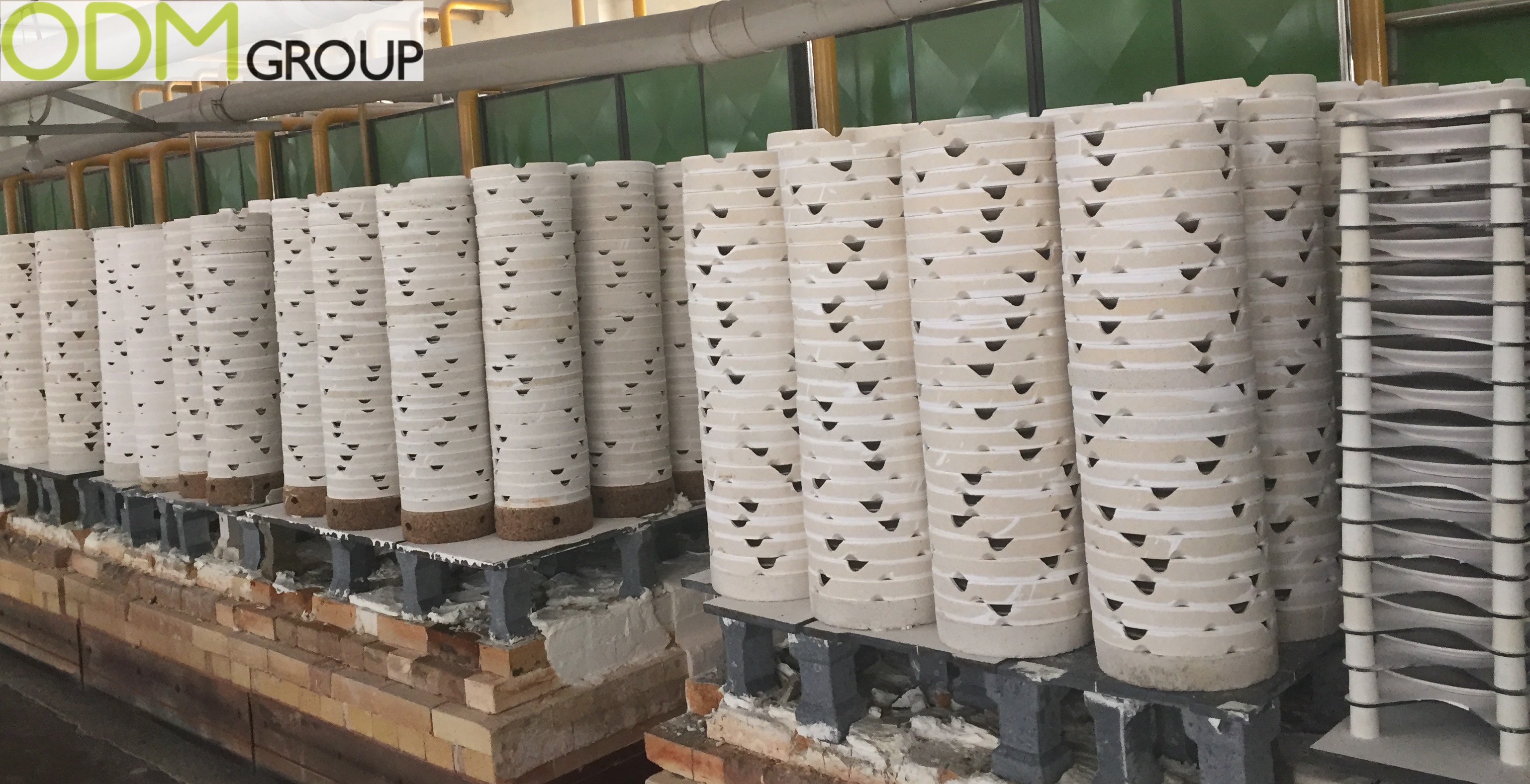
Ceramic Factory Visit – Manufacturing in China
Glazing process consist in the application of a ceramic surface coating to make the piece more impervious to water and make it looks better.
Ceramic Factory Visit – Step 3. Decoration
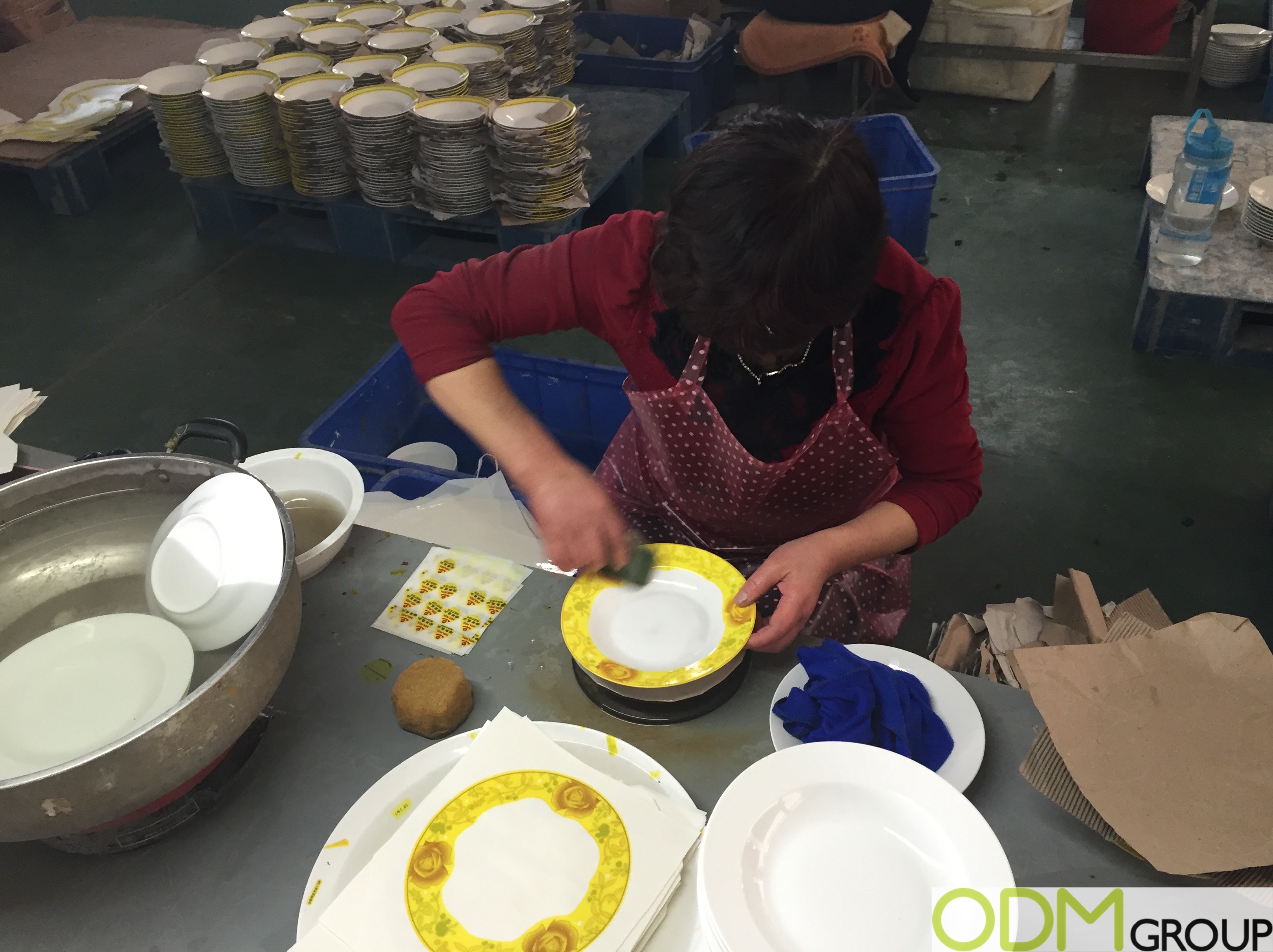
Ceramic Factory Visit – Manufacturing in China
The decoration can be made at the moment of shaping under the glaze or enamel which protects the ceramic, or after the glaze and enamel are laid. All types of plastic stickers can be applied to ceramics once grease is removed. The stickers give a style to ceramics and are resistant to hand wash, water, heat and steam washing.
Ceramic Factory Visit – Step 4. Drying and Cooking
Drying takes place in an ambient atmosphere for a sufficient time to allow the elimination of water and thus avoid the risk of cracks during cooking.
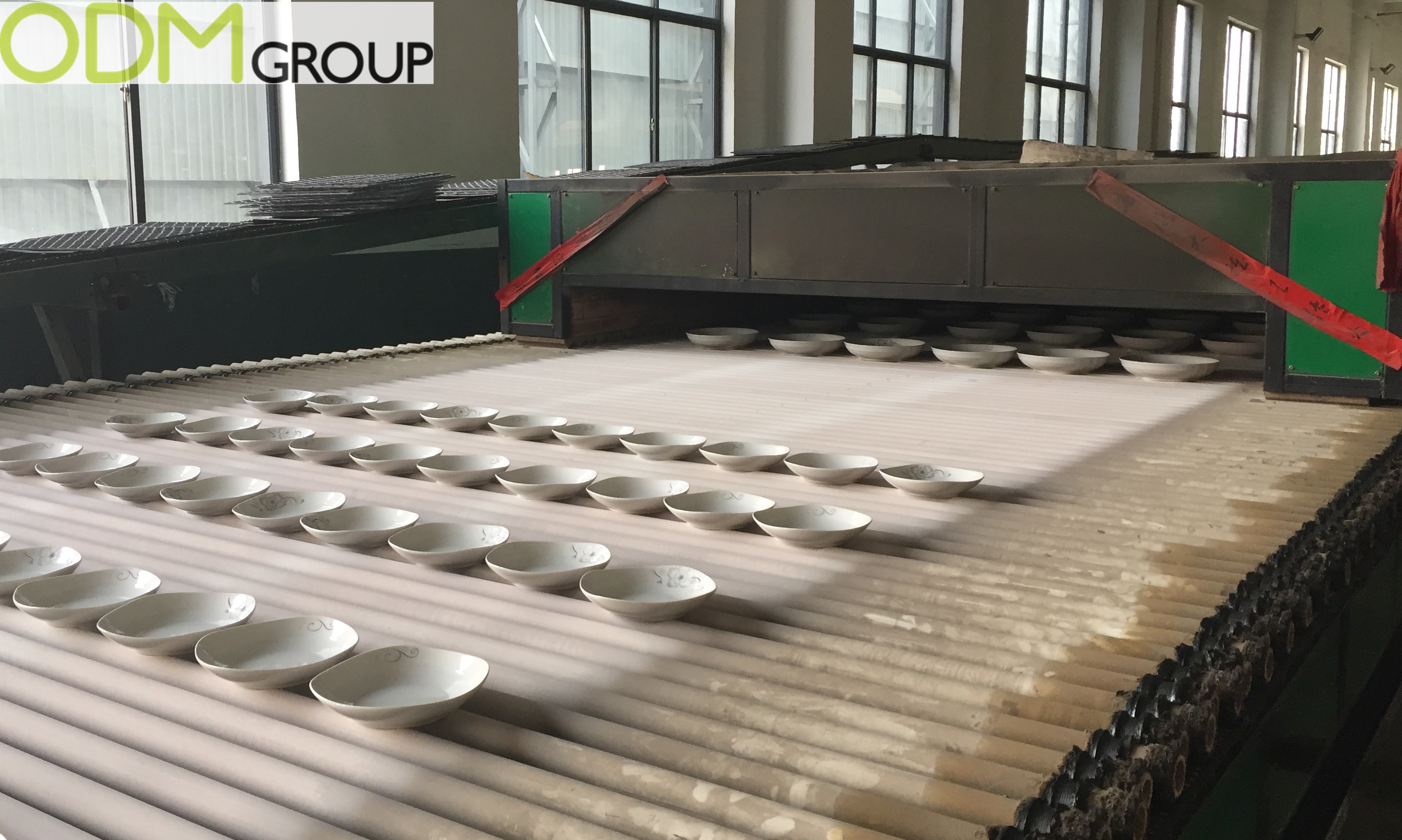
Ceramic Factory Visit – Manufacturing in China
Cooking is done in kilns. This is the second large cooking that takes place after the setting of the decoration and the glaze or enamel, and allows vitrification of the pastes and fixing of the colors.
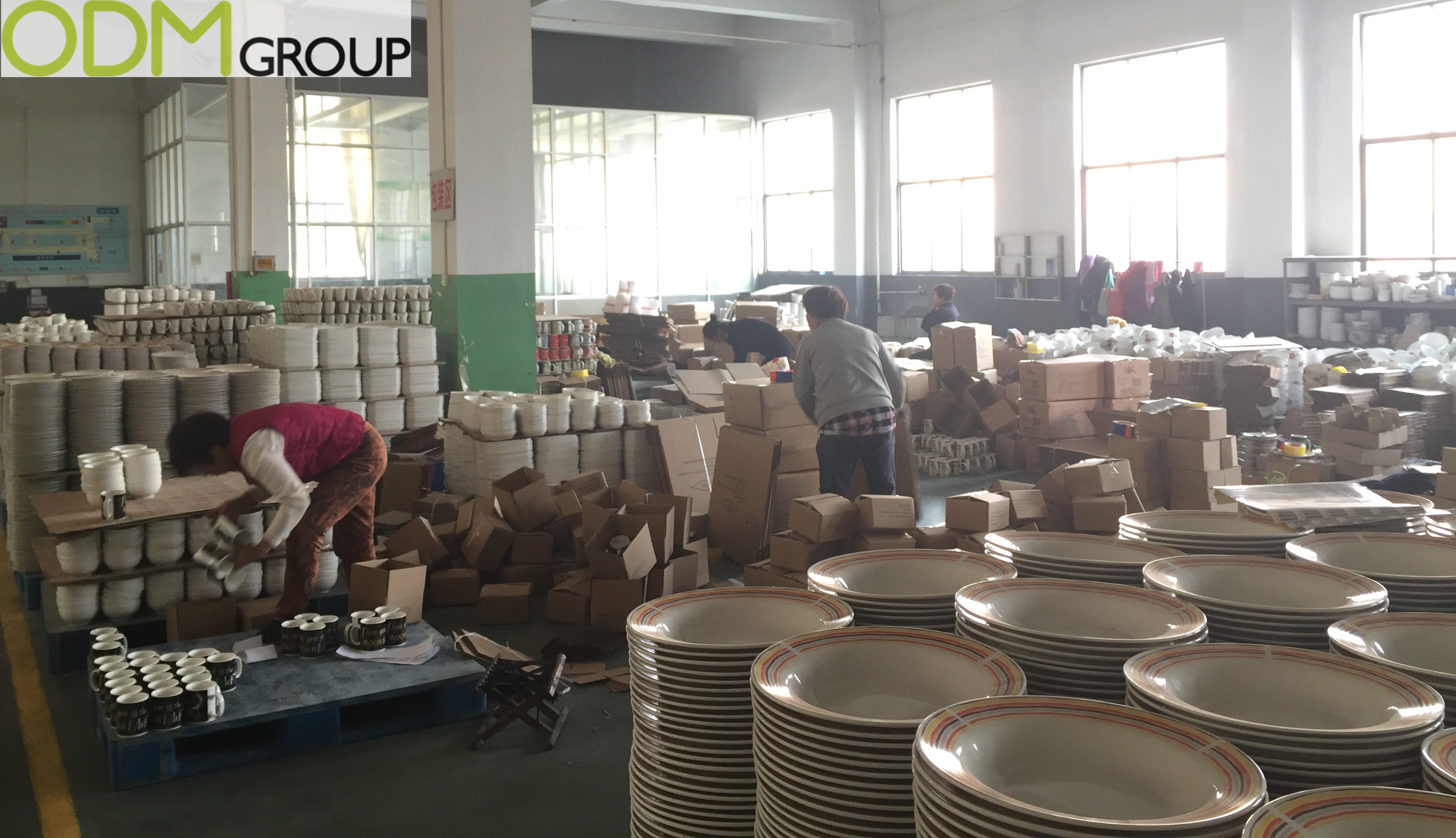
Ceramic Factory Visit – Manufacturing in China
See this video showing factory processes:
Limitations of Pantone Matching of Ceramics
The limation is that the final color of the ceramic will not be the same, but it will be as similar as possible. It will be matching around 95%. The heat from baking the duration of the ceramic exposed to that heat will inevitably affect the color. The factory will bake batch by batch so that the batches will have color tolerance.
However, we will do our best to manage the quality of the ceramics. From the conception of the idea to ceramic baking, we will do comparison/performance tests to a range of standards. So, you can rest assured that we have a broad range of analytical capabilities at our disposal to guarantee high-quality ceramic products for you.
To Sum It Up
At ODM we have significant experience in product design, sourcing and manufacturing. We can help you with your marketing budgets effectively. Be sure to contact us if you are interested in finding out more information about ceramic products.
We at ODM can provide custom promotional giveaways for your company. Do you want your marketing gifts to be personalized? We can do the job for you! We also manufacture different personalized marketing gifts for our clients!
Aside from promotional products, ODM also creates first-rate POS display units and branded product packaging. So, if you want to learn more about our high-quality services, do not hesitate to reach us today.
For more factory and manufacturing information, as well as ceramic products, see the blogs below:
Don’t be boring… Stand out with these playful mugs of all shapes and sizes. Click the link to find out more about how to be create in production and why it will help with sales.
These highly aesthetic and modern ceramic pieces are an absolute stand out. The thoughtful ceramic tray to place these four pieces on is just a simple additional product which will make you be more noticeable that competitors.
These custom promotional mugs are colourful and exciting. They are sure to grab the attention of possible buyers.
What are the 3 types of ceramics?
There is porcelain, earthenware and stoneware.
What is the manufacturing process of ceramic?
The first step is the creation of the mould; in order to create same items. A mould is made with clay and can produce about 200 pieces. it is important to construct a formwork slightly larger than the desired shape due to the retraction of the ground during heating. Then, the second step is shaping. Step 3 is decoration; stickers give a style to ceramics and are resistant to hand wash, water, heat and steam washing. Finally, drying and cooking.
Which techniques are used in the shaping process of ceramic?
Sizing: Forming the dough on a rotating mould by the action of a gauge. The plaster absorbs the water from the slip and a solidified mass is formed progressively on the walls of the mould. It is the time that the slip is left in the mould which will give the thickness of the film of the piece. The excess slip is then evacuated and the piece unmoulded. The second technique is slip casting : the raw material is clay dough. The advantage of this material is its plasticity. This gray dough that contains vegetable matter is dissolved with water and this is called slip casting process.
